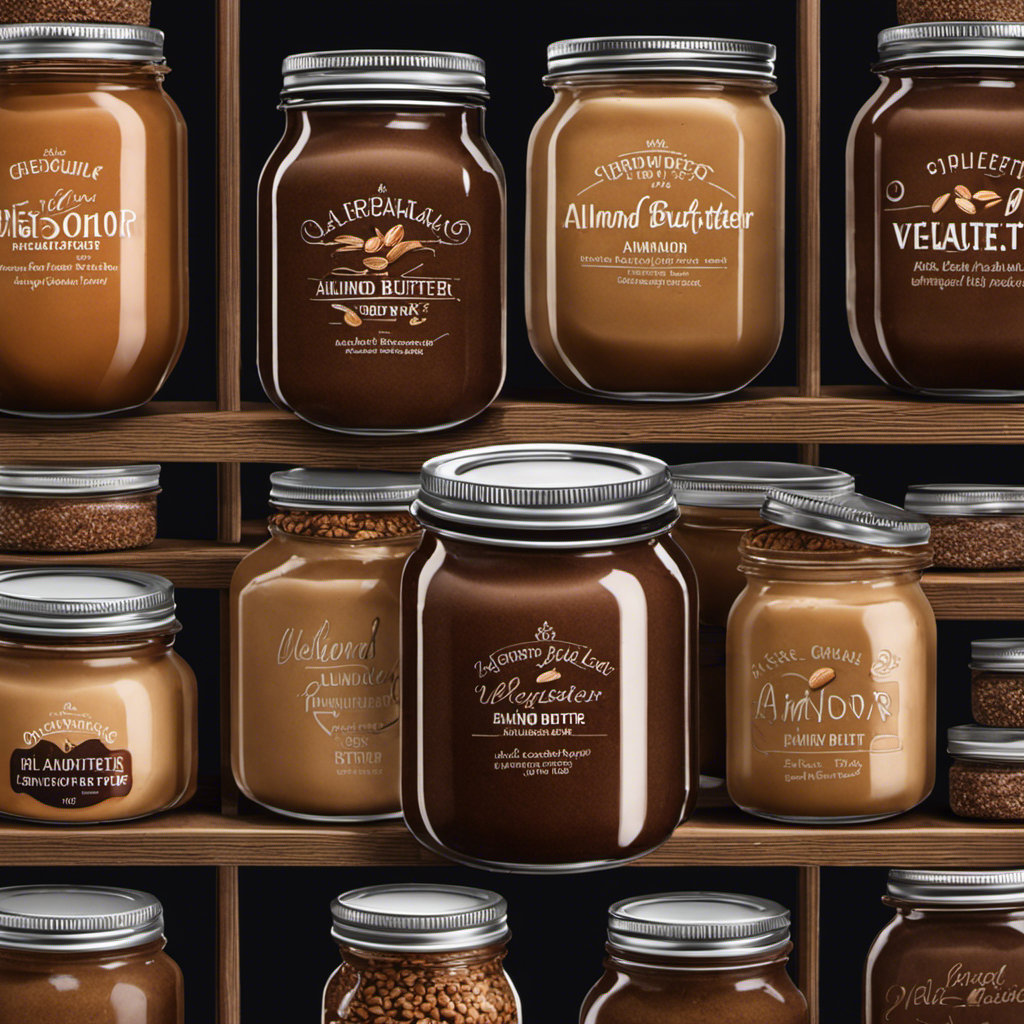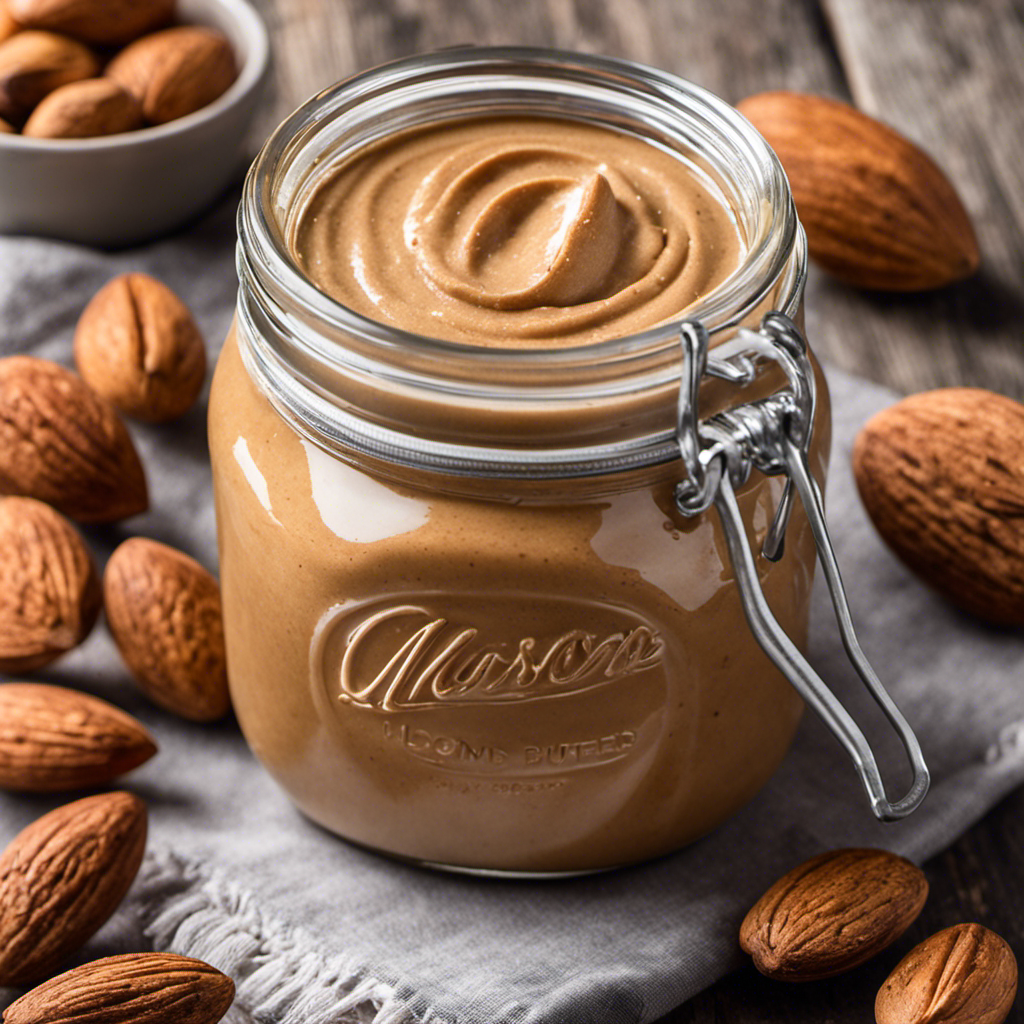Ever thought about how long a butter knife really is? In this article, we will explore the intriguing history, varieties, and sizes of butter knives.
We’ll explore the various factors that determine their length and how different cultures have unique designs and features for their butter knives.
Additionally, I’ll discuss the common uses for these versatile utensils and provide tips on choosing the right length for your butter knife.
Get ready to slice through the buttery world of cutlery knowledge!
Key Takeaways
- Standard butter knives measure around 8-9 inches in length.
- The ideal weight of a butter knife should be light but not flimsy.
- Different materials like stainless steel, wood, plastic, and silver offer unique qualities and aesthetic appeal.
- Butter knives are commonly used for spreading butter, condiments, and cutting soft foods.
The History of Butter Knives
If you’re curious about the history of butter knives, you’ll be interested to know that they have been used for centuries.
The evolution of butter knives can be traced back to ancient civilizations such as the Egyptians and the Romans. Initially, these knives were simple tools made of bone or wood, used for spreading butter or other spreads onto bread.
Over time, the design of butter knives evolved, with the introduction of metal blades and handles. Today, we commonly see butter knives with stainless steel blades and ergonomic handles.
In addition to their practical function, butter knives also hold symbolic significance. They are often associated with hospitality and are considered a staple utensil in dining etiquette.
The butter knife’s long history and symbolic importance make it an interesting object to explore.
Types of Butter Knives
You can find different varieties of these utensils designed specifically for spreading butter. When it comes to butter knives, there are several types available, each with its own unique design and purpose. One important factor to consider when choosing a butter knife is the ergonomic handle materials. These materials ensure a comfortable grip and prevent hand fatigue while spreading butter. Some common ergonomic handle materials include wood, stainless steel, and silicone. Another aspect to consider is the different types of butter spreads. From traditional butter knives to specialized spreaders for flavored or whipped butter, you have plenty of options to choose from. Here is a table showcasing some popular types of butter knives:
| Type of Butter Knife | Description |
|---|---|
| Traditional Butter Knife | A classic knife with a flat, wide blade for spreading butter evenly on bread or toast. |
| Butter Spreader | This knife has a long, narrow blade specifically designed for spreading butter on bagels or muffins. |
| Cheese Knife | While primarily used for cutting cheese, a cheese knife can also be used to spread butter on crackers or bread. |
No matter your preference or the occasion, there is a butter knife out there to suit your needs and enhance your butter-spreading experience.
Standard Length of Butter Knives
When it comes to butter knife dimensions, it is important to consider the common sizes and the ideal length for optimal butter spreading.
The dimensions of a butter knife can vary, but there are standard lengths that are commonly found. Understanding these dimensions and sizes will help you choose the right butter knife for your needs.
Butter Knife Dimensions
The dimensions of a butter knife can vary depending on the brand and style. Typically, a standard butter knife measures around 8-9 inches in length. However, some brands offer shorter or longer options based on personal preference.
When it comes to the ideal weight of a butter knife, it should be light enough to handle easily but not too light that it feels flimsy.
As for the materials used in butter knives, stainless steel is the most common choice due to its durability and resistance to rust. Some high-end butter knives may also feature handles made from materials like wood or bone for a more elegant touch.
Overall, the dimensions, weight, and materials of a butter knife play a significant role in its functionality and aesthetic appeal.
- Length: 8-9 inches
- Ideal weight: Light but not flimsy
- Common materials: Stainless steel, wood, bone
Common Butter Knife Sizes
For common sizes of butter knives, you’ll find options ranging from 8-9 inches in length.
When it comes to butter knife maintenance, it’s important to consider the materials used. Stainless steel is a popular choice due to its durability and resistance to corrosion. This makes it easy to clean and ensures that your butter knife will last for years to come.
Another common material used for butter knives is silver. While it may require more maintenance to prevent tarnishing, silver adds an elegant touch to any table setting.
Regardless of the material, regularly washing your butter knife with warm soapy water and drying it thoroughly will help maintain its quality and prevent any food residue from sticking.
Ideal Butter Knife Length
Now that we know about the common sizes of butter knives, let’s discuss the ideal length for a butter knife. The length of a butter knife is typically determined by personal preference and the intended use. However, there are some general guidelines to consider.
-
Butter knife handle materials:
-
Stainless steel: This is a popular choice for butter knife handles due to its durability and resistance to corrosion.
-
Wood: Some butter knives have wooden handles, which provide a warm and natural feel. However, they require more maintenance to prevent damage and warping.
-
Plastic: Butter knives with plastic handles are lightweight and easy to clean, but they may not be as durable as other materials.
-
Butter knife maintenance tips:
-
Hand wash: To preserve the quality of your butter knife, it is recommended to wash it by hand rather than in a dishwasher.
-
Dry thoroughly: After washing, make sure to dry the butter knife thoroughly to prevent any water spots or rusting.
-
Store properly: Store your butter knife in a dry and well-ventilated area to avoid moisture buildup.
How to Measure the Length of a Butter Knife
To measure the length of a butter knife, grab a ruler and place it alongside the knife. Make sure the ruler is aligned with the handle of the knife for an accurate measurement.
Holding the knife properly is essential for a comfortable and safe dining experience. Grip the handle firmly but not too tightly, ensuring that your fingers are positioned comfortably around it.
Different materials are used in making butter knives, each with its own unique qualities. Stainless steel is a popular choice due to its durability and resistance to rust. Other materials like wood, plastic, and silver are also used, each offering its own aesthetic appeal and functionality.
Ultimately, the length and materials used in a butter knife are important factors to consider when choosing the right utensil for your dining needs.
Factors Affecting the Length of Butter Knives
When choosing a butter knife, consider the factors that can affect its length. The length of a butter knife is influenced by several factors, including the type of handle and the overall design.
Handle shape: The shape of the handle can have a significant impact on the length of the butter knife. Handles that are longer and more ergonomic can provide better grip and control, making them ideal for spreading butter smoothly.
Blade length: The length of the blade is another factor to consider. Longer blades are often preferred for spreading butter on large surfaces, while shorter blades are better suited for precision tasks like cutting through toast.
Overall design: The design of the butter knife, including the handle-to-blade ratio, can also affect its length. A well-balanced design ensures optimal functionality and ease of use.
Considering these factors will help you choose the perfect butter knife for your needs. Now, let’s explore the fascinating world of butter knives in different cultures.
Butter Knives in Different Cultures
The way butter knives are used and designed varies across different cultures.
Butter knife traditions hold cultural significance in many societies, reflecting their unique customs and practices.
For instance, in European countries like France and Italy, butter knives are often used as part of an elaborate cheese-serving ritual. These knives are delicately crafted with intricate designs, showcasing the importance of presentation and culinary artistry.
In contrast, in Asian cultures such as Japan and China, butter knives are less commonly used, as alternative utensils like chopsticks are preferred for spreading butter or condiments. However, some Asian cultures do have their own versions of butter knives, specially designed for their traditional dishes.
These cultural differences highlight the diverse ways in which butter knives are incorporated into culinary traditions worldwide.
Now, let’s explore the unique designs and features of butter knives.
Unique Designs and Features of Butter Knives
When it comes to butter knives, there are two key design elements that make them stand out: ergonomic handle shapes and decorative blade designs.
Ergonomic handle shapes are important for ensuring a comfortable grip and reducing strain on the hand during use.
Decorative blade designs, on the other hand, add a touch of style and elegance to the knife, making it not just a functional tool but also a visually appealing piece of cutlery.
In this discussion, I will delve into the significance of these design elements and how they enhance the overall experience of using a butter knife.
Ergonomic Handle Shapes
Ergonomic handle shapes on butter knives provide a comfortable grip. When it comes to choosing the right handle shape for a butter knife, there are several factors to consider. Here are the benefits of different handle shapes:
-
Curved Handles: These handles are designed to fit the natural contours of the hand, offering a secure and comfortable grip. They are especially beneficial for individuals with arthritis or limited hand mobility.
-
Straight Handles: Straight handles provide a classic and sleek look. They offer a firm grip and are ideal for those who prefer a more traditional design.
-
Contoured Handles: These handles feature indentations or grooves that allow for a better grip. They provide additional stability and control when cutting or spreading butter.
When it comes to ergonomic handle materials, options include wood, plastic, and stainless steel. Each material has its own unique benefits, such as durability, heat resistance, and ease of cleaning. Ultimately, the choice of handle shape and material depends on personal preference and individual needs.
Decorative Blade Designs
When it comes to butter knife designs, there are not only different ergonomic handle shapes to consider but also decorative blade designs. These designs can add a touch of elegance and style to your dining experience.
Decorative handle materials such as bone, wood, or mother-of-pearl can enhance the overall look of the knife. They can be intricately carved or embellished with patterns or designs to suit your personal taste and complement your table setting.
In addition to the aesthetics, it is important to keep your butter knife sharp for optimal performance. Proper sharpening techniques involve using a sharpening stone or honing rod to maintain the blade’s edge. Gently run the blade against the stone or rod at a consistent angle, following the knife’s bevel. This will help keep the blade sharp and ensure smooth cutting and spreading of butter or other spreads.
Regular maintenance and sharpening will extend the lifespan of your butter knife and maintain its functionality.
Common Uses for Butter Knives
One of the most common uses for butter knives is to spread butter onto bread or toast. However, butter knives have many other practical applications as well. Here are some alternative uses for butter knives:
-
Butter knife safety:
-
Always hold the knife by the handle to avoid accidental cuts.
-
Keep the blade away from your body while using it.
-
Store butter knives in a safe place, away from children’s reach.
-
Alternative uses for butter knives:
-
Opening sealed envelopes or packages.
-
Spreading condiments like mayonnaise or peanut butter.
-
Cutting soft foods like bananas or avocado.
Remember to exercise caution when using a butter knife for any purpose other than spreading butter. By following butter knife safety guidelines, you can enjoy the convenience and versatility of this kitchen tool.
Choosing the Right Length for Your Butter Knife
To choose the right length for your butter knife, think about how it feels in your hand and if it is comfortable to use.
When it comes to butter knife materials, you have a few options. Stainless steel is a popular choice due to its durability and resistance to rust. Another option is silver, which is known for its elegance and ability to enhance the dining experience.
As for the length of the butter knife, it can vary depending on personal preference and the intended use. A shorter butter knife, around 5-6 inches, works well for spreading butter or jam on bread. On the other hand, a longer butter knife, around 7-8 inches, is better suited for slicing through sticks of butter or other spreads.
Ultimately, the choice of length should be based on what feels comfortable and efficient for you in the kitchen or at the dining table.
Frequently Asked Questions
Are Butter Knives Only Used for Spreading Butter?
Butter knives are not only used for spreading butter. They can also be used for other culinary applications like spreading condiments, frosting cakes, or even serving soft cheeses. However, there are more efficient knives for spreading butter.
What Are Some Common Materials Used to Make Butter Knives?
Common materials used to make butter knives include stainless steel, silver, and plastic. The manufacturing process involves shaping the material into a long, slender blade with a blunt end for spreading.
Can Butter Knives Be Used for Cutting Other Types of Food?
Yes, butter knives can be used for cutting other types of food. However, they are not designed for heavy-duty cutting. Proper techniques include using a sawing motion and applying gentle pressure. Creative ways to repurpose a butter knife include using it as a makeshift screwdriver or letter opener.
What Is the Average Weight of a Butter Knife?
The average weight of a butter knife depends on the materials used. Typically, a stainless steel butter knife weighs around 2-3 ounces. However, there can be variations based on design and craftsmanship.
Are There Any Special Care Instructions for Maintaining Butter Knives?
When it comes to maintaining butter knives, there are indeed special care instructions to ensure their longevity. Additionally, using different materials for butter knives can offer unique benefits in terms of durability and style.
Conclusion
In conclusion, the length of a butter knife may vary depending on its type and cultural influences.
From the rich history of butter knives to the unique designs and features they possess, these versatile tools have become a staple in every kitchen.
When choosing the right length for your butter knife, consider factors such as personal preference and the intended use.
Remember, ‘measure twice, cut once’ – finding the perfect length will ensure a smooth and enjoyable butter-spreading experience.
So go ahead, butter up and enjoy!










